Contents
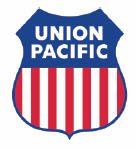
Summary
- UNP is North America’s largest publicly traded railroad. Its extensive rail network places it in an advantageous position.
- It continues to make progress in reducing its Operating Ratio (OR). In FY2017 its OR was 63%. Its 2019 target is ~60%.
- UNP rewarded shareholders with dividend payments and share repurchases totalling $5.995B in 2017.
- I view UNP has having a wide moat and will be acquiring shares with the view of holding them long-term.
Introduction
I recently wrote a post about Canadian National Railway (TSX: CNR) which released its Q4 and FY2017 results on January 23, 2018; CNR is a core holding within the FFJ Portfolio and is also a member of the FFJ Master Stock List.
Union Pacific Corporation (NYSE: UNP) reported Q4 and FY2017 results on January 25, 2018. While it posted higher revenues and earnings, Wall Street’s lofty expectations exceeded actual results. This resulted in a sudden drop when earnings were announced.
While UNP is one of the stocks include on the FFJ Master Stock list, I currently do not own any shares. The purpose of this analysis is to determine whether UNP’s current valuation and outlook present an opportunity to initiate a position.
Business Overview
UNP is a massive railroad with a current market cap of ~$105B as at January 26, 2018. The next largest publicly traded Class I North American railroad is CNR with a market cap of ~$58.9B as the larger Burlington Northern Santa Fe (BNSF) railroad is privately owned by Berkshire Hathaway.
Its rail system links 23 states in the western two-thirds of the US and serves many of the fastest-growing U.S. population centers. It operates from all major West Coast and Gulf Coast ports to eastern gateways and connects with Canada's rail systems. It is also the only railroad serving all six major Mexico gateways.
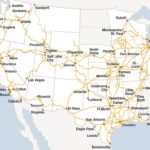 State by state guides to UNP’s system can be found here.
State by state guides to UNP’s system can be found here.
Q4 and FY2017 Financial Results
UNP released its Q4 and FY2017 results on January 25, 2018.
The following Condensed Statement of Income reflects FY2017 diluted EPS of $13.36. If we exclude the adjustments reflecting the impact of corporate tax reform, however, adjusted net income was $4.6B, or $5.79 per diluted share.
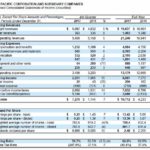 Source: UNP January 25, 2018 New Release
Source: UNP January 25, 2018 New Release
 Source: UNP Q4 2017 Earnings Release January 25, 2018
Source: UNP Q4 2017 Earnings Release January 25, 2018
Details on the results of the 6 business groups can be found here. Going forward all results will be reported under the newly established four business groups: agricultural products, energy, industrial, and premium.
As evidenced from the following table, UNP’s revenue for the year was heavily impacted by favorable results in the movement of Industrial Products. The shipping of frack sand to the oil and gas producers has been a booming business for UNP. The reason for this is that most of the sand mines in the U.S. are in the Upper Midwest while most shale basins are west of the Mississippi where Union Pacific shares a near duopoly with BNSF.
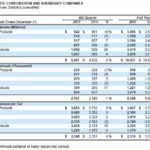 Source: UNP January 25, 2018 New Release
Source: UNP January 25, 2018 New Release
Turning to the statement of cash flows we see that UNP repurchased ~$4B in common shares and distributed ~$2B in dividends in FY2017. A portion of this was financed through the issuance of $2.735B of long-term debt. Despite the issuance of this additional debt, UNP’s debt to capital level improved; UNP’s current long-term debt is rated A3.
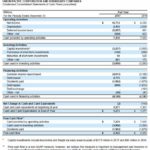 Source: UNP January 25, 2018 New Release
Source: UNP January 25, 2018 New Release
The following are the long-term debt credit ratings assigned by Moody’s to the other Class I railroads as at January 26, 2018.
- BNSF (owned by Berkshire Hathaway): Aa2
- Canadian National Railway (CNR): A2
- Canadian Pacific (CP): Baa1
- CSX Corporation (CSX): Baa1
- Norfolk Southern (NSC): Baa1
- Kansas City Southern (KSU): Baa3
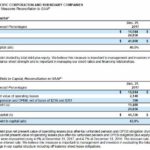 Source: UNP January 25, 2018 New Release
Source: UNP January 25, 2018 New Release
Given the strengthening of diesel fuel prices in 2017, UNP experienced an average 22% diesel fuel price increase to $1.81/gallon in 2017 versus $1.48/gallon in 2016. For years, UNP had old contracts which lacked effective fuel surcharges or which failed to fully reflect market rates. Those old contracts have been repriced over the years and management has indicated there are no material legacy contracts remaining.
The all important Operating ratio (OR), a major measure of profitability in the railroad industry, came in at 63% for FY 2017; this ratio is a railroad’s operating expenses as a percentage of revenue with a lower ratio being preferable.
UNP’s OR in 2011 – 2016 was 70.7%, 67.8%, 66.1%, 63.5%, 63.1% and 63.5%. The 2019 target is ~60% and UNP is striving to lower the OR to ~55% beyond 2019.
 Source: UNP Q4 2017 Earnings Release January 25, 2018
Source: UNP Q4 2017 Earnings Release January 25, 2018
By comparison, CNR’s OR is typically in the mid to high 50s. This year CNR was faced with a series of outages on its main line and very cold December weather across the entire network which reduced train and car velocity and increased terminal dwell. As a result, CNR reported a 60.4% Operating ratio in Q4 2017 versus 56.6% in Q4 2016. The higher Operating ratio in Q4 resulted in the full year Operating ratio of 57.4% versus 55.9% in 2016.
UNP’s all important free cash flow (FCF) generated from operations amounted to $2.162B versus $2.253B in 2016, $0.524B in 2015, and $1.504B in 2014; these figures were taken directly from UNP’s 10-K reports.
Forecast
On the January 25, 2018 analyst call, management expressed optimism for 2018 and disclosed the following items.
The federal statutory income tax rate will decline from 35% to 21% but if state taxes are included, UNP’s effective income tax rate will be ~25%.
From a cash perspective, UNP expects the 2018 cash tax rate to be between 17% and 18%. The cash tax rate reflects the benefits from the lower federal tax rate and immediate expensing of eligible capital expenditures partially offset by the negative impact of prior year bonus depreciation programs. In the future, UNP expects its cash tax rate to trend in the direction of the statutory rate.
UNP’s plan calls for capital expenditures in the ~$3.3B region; guidance of reinvesting around 15% of revenue remains unchanged.
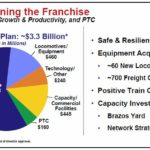 Source: UNP Q4 2017 Earnings Release January 25, 2018
Source: UNP Q4 2017 Earnings Release January 25, 2018
Any cash available after CAPEX spend will be returned to shareholders in the form of dividends and share repurchases.
Management expects volumes in Q1 and the full year will increase in the low single-digit range.
Pricing initiatives are expected to exceed UNP’s ~2% rail inflation cost in 2018; labor inflation and overall inflation under 2% will be driven primarily by lower expected health and welfare costs.
On the productivity side, UNP plans to achieve approximately $0.3B - $0.35B of savings in 2018 as it continues to focus on G55 and zero initiatives; UNP has a goal of achieving a 55% operating ratio over time with a goal of zero injuries.
Valuation
While FY2017 diluted EPS was $13.36, this metric was skewed by the adjustments reflecting the impact of corporate tax reform. Without same, UNP generated adjusted net income of $5.79/diluted share.
Based on the current stock price of $134.23 as at the close of business January 26, 2018, we arrive at an adjusted PE of ~23.2. Using the $7.44 projected mean 2018 adjusted EPS from multiple analysts, the estimated forward PE ratio is ~18. I view this as a reasonable level for a company of UNP’s quality.
UNP’s dividend history can be found here.
UNP currently pays a $0.665 quarterly dividend. This was increased from $0.605 effective with the December 28, 2017 dividend payment date. Based on UNP’s current stock price of $134.23, the forward dividend yield is ~1.98%.
Using UNP’s projected mean 2018 adjusted EPS of $7.44, the $2.66 annual dividend payment represents a ~35.8% dividend payout ratio.
 Source: UNP Q4 2017 Earnings Release January 25, 2018
Source: UNP Q4 2017 Earnings Release January 25, 2018
UNP has rewarded shareholders with dividend payments and share repurchases totalling $4.857B in 2014, $5.809B in 2015, $4.984B in 2016 and $5.995B in 2017. I strongly suspect Investors can expect UNP to continue to reward them with share repurchases in 2018.
Final Thoughts
I like the railroad industry’s barriers to entry which I discussed in my recent CNR post. I do, therefore, want to add more exposure to the operators which have the greatest competitive advantages; I currently only have exposure to CNR.
UNP, having the largest US rail network of the publicly traded Class I railroads, is the railroad which has the greatest appeal to me.
UNP’s stock price has experienced a dramatic run up in the last few months having gone from ~$100 at the beginning of August 2017 to ~$142 on June 22, 2018 before the recent ~5% pullback subsequent to the release of FY2017 results which reflected a $0.01/share miss on earnings per share. This sudden drop on such a small miss suggests to me that many investors are currently somewhat irrational.
I will be taking advantage of the recent pullback and will acquire shares in this wide moat railroad.
Thanks for reading!
Note: Thanks for reading this article. Please send any feedback, corrections, or questions to [email protected].
Disclaimer: I have no knowledge of your individual circumstances and am not providing individualized advice or recommendations. I encourage you not to make any investment decision without conducting your own research and due diligence, and consulting your financial advisor about your specific situation.
Disclosure: I currently have no position in UNP and will be initiating a position within the next 72 hours.
I wrote this article myself and it expresses my own opinions. I am not receiving compensation for it and have no business relationship with any company whose stock is mentioned in this article.

